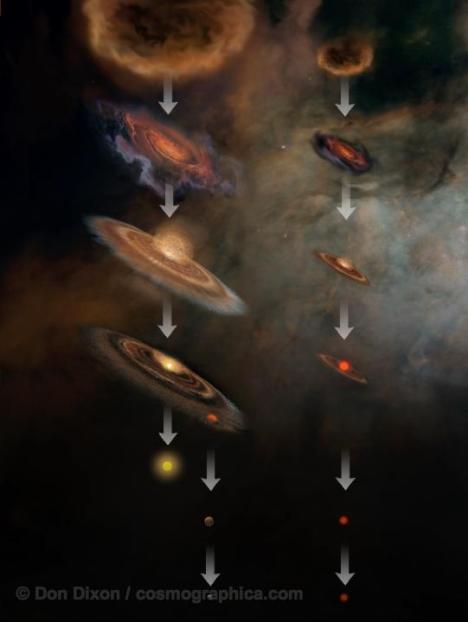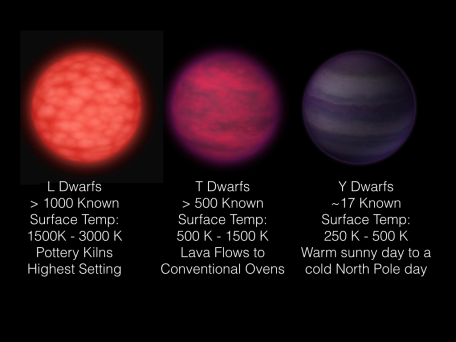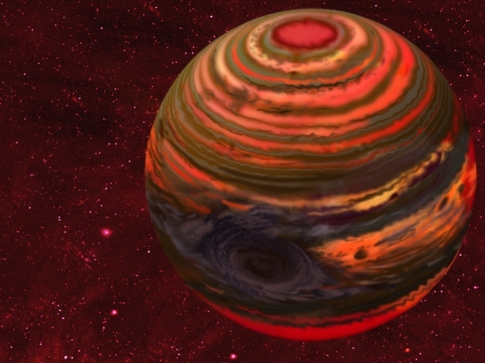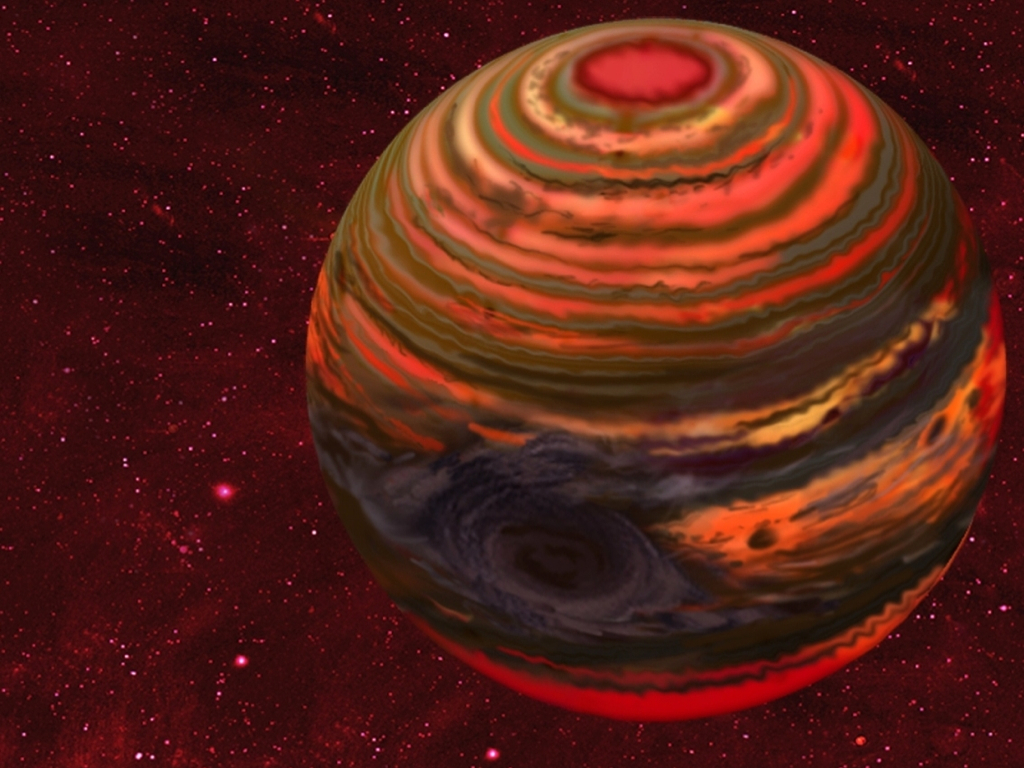You probably didn’t realize it, but when you started classifying on BackyardWorlds.org you were actually helping us search the nearby solar neighborhood for cold hidden worlds called brown dwarfs. You might be asking yourself “Brown what”? And I’m here to answer that! Lets start from the beginning. Here is a cartoon version of star formation (on the left) and brown dwarf formation (on the right). They form the same way! The ingredients are a cloud of Hydrogen and Helium that collapses, fragments and then ignites. Now the difference is that the star can ignite nuclear fusion. The brown dwarf isn’t massive enough to get the core hot enough for that to happen. So instead of having a nuclear engine that sustains its brightness for millions or billions of years like stars do, brown dwarfs just cool off for their entire lives. 
Want to know another kind of object that cools for the entirety of its existence? A planet. So I like to say that brown dwarfs are objects that form like stars but evolve like planets.
Now brown dwarfs have temperatures so low that the majority of their light doesn’t come out in visible light. While we now know that they are ABUNDANT in the Milky Way Galaxy, if you look up in the nighttime sky not a single one of those several thousand points of light you see is a brown dwarf. They are invisible to human perception. In order to find them we must turn to longer wavelength light. Brown dwarfs glow in the infrared. Thats why the NASA data we are using from the Wide-Field Infrared Survey Explorer (or WISE for short) is so critical to brown dwarf science. WISE has scanned the entire sky in the infrared and given us an unprecedented search tool for cold brown dwarfs near the Sun. In fact the WISE telescope was designed in part to be able to find the coldest types of these objects.
Brown dwarfs come in three types of “flavors”. There are L types, T types and Y types. See the image below for some details on the temperatures of these types. The L types are the warmest and the Y types are the coldest. Arguments could be made for which kind of brown dwarf is the most exciting to study but for the sake of this blog post I’ll tell you about two different ones that were stupendous discoveries to come out of mining WISE data the same way that you are doing.
The L types are the warmest and the Y types are the coldest. Arguments could be made for which kind of brown dwarf is the most exciting to study but for the sake of this blog post I’ll tell you about two different ones that were stupendous discoveries to come out of mining WISE data the same way that you are doing.
Just a few years ago an Astronomer from Penn State named Kevin Luhman was looking through the WISE data for objects that moved over the full timeline of the spacecraft. In 2013 he discovered a fantastic brown dwarf binary (named Luhman16AB after him) that turned out to be the 3rd closest system to the Sun. Until that time Astronomers figured they had the solar neighborhood solidified. The last time the top 5 closest objects to the Sun had changed was almost a century prior. More than that, Luhman16AB is a dynamic system. One of the objects is an L type and one is a T type. The L type appears to have large violent storms raging in the outer atmosphere. Astronomers have made maps of it and are using it to understand what exoplanet weather might look like. This binary had been missed by numerous professional and very experienced astronomers (myself included) because it moves very fast and is in a particularly crowded part of the sky. By blinking images you might be able to uncover another bright, beautiful system like this one.

The second object I want to tell you about is one of the most exciting discoveries I’ve seen in my career as a brown dwarf scientist. Its an object called WISE0855 and its a Y type brown dwarf with a mass between 3 – 10 times that of Jupiter and a surface temperature equivalent to a balmy day at the North Pole. Dr. Luhman also found this one by blinking images and it turns out to be the coldest compact source ever discovered outside our own solar system. It’s so cold that its outer atmosphere is likely teeming with water ice clouds. In 2014 I wrote a paper on the indications of those water clouds in the object and in 2016 I worked with a team that obtained the very first spectrum of it. We directly compared it to Jupiter and found striking similarities. Best of all, WISE0855 is the 4th closest system to the Sun. Just a bit further than Luhman16AB. In just one year, WISE data completely changed the solar neighborhood. This should make you wonder, what else is out there? With so many eyes working on the WISE dataset I’m hoping we pinpoint a brown dwarf that is closer than proxima centauri (the closest star). One that is covered in strange exotic clouds. Hopefully one of our thousands of volunteers is blinking an image right now and marking a key object in understanding the atmospheres of worlds beyond our solar system.
Good Luck Searching! — Jackie
